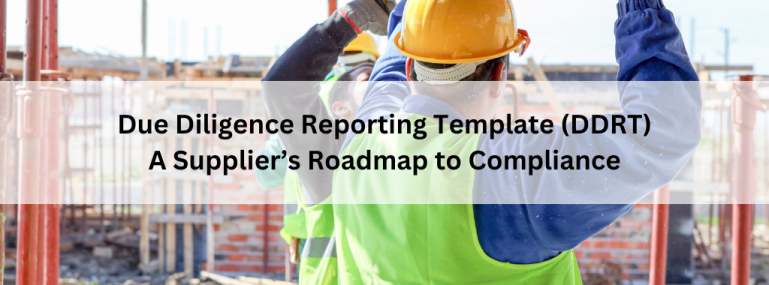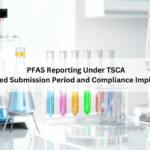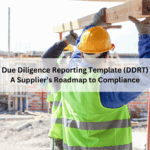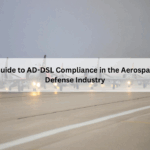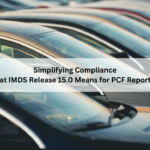As global attention intensifies on supply chain ethics and transparency, the Due Diligence Reporting Template (DDRT) is emerging as a potential game-changer for material compliance. This is especially true for companies engaged in global sourcing within sectors like automotive, electronics, and industrial manufacturing.
What is the DDRT?
The Due Diligence Reporting Template (DDRT) is a free, standardized Excel-based tool developed by the Automotive Industry Action Group (AIAG) in collaboration with major OEMs such as Ford, GM, Honda, Nissan, Stellantis, and Toyota.
It is designed to help suppliers report on forced labor and human rights risks within their supply chains, making compliance reporting more consistent and transparent.
Why It Matters
New global regulations are raising the bar for accountability around human rights and forced labor, including:
- U.S. Uyghur Forced Labor Prevention Act (UFLPA)
- Germany’s Supply Chain Due Diligence Act (LkSG)
- E.U. Corporate Sustainability Due Diligence Directive (CSDDD)
The DDRT helps suppliers align with these evolving standards by:
- Screening vendors for high-risk profiles.
- Reporting on mitigation measures.
- Offering a consolidated format that allows suppliers to report to multiple OEMs.
Unique Features of DDRT
- Risk Screening Inputs: Incorporates risk assessment tools (e.g., Kharon) to identify potential forced labor risks.
- Tiered Supplier Reporting: Enables tracking compliance across Tier 1 and Tier 2 supply chain levels.
- Editable Declarations: Allows companies to customize and update their declarations for accuracy.
The Due Diligence Reporting Template (DDRT) is more than just another reporting form—it is a strategic tool helping companies align with global human rights expectations and emerging due diligence laws.
As transparency and accountability become non-negotiable in global supply chains, adopting DDRT can give suppliers a competitive edge, ensuring stronger relationships with OEMs and long-term compliance confidence.
At ComplianceXL, we support organizations in understanding, preparing, and implementing DDRT reporting to meet evolving regulatory and customer requirements.
FAQs:
1.What is the DDRT and who developed it?
The DDRT is a standardized, Excel-based tool created by AIAG in partnership with leading automotive OEMs. It helps suppliers report on human rights risks—especially forced labor—across their supply chains.
2.How does the DDRT differ from the Conflict Minerals Reporting Template (CMRT)?
Both templates promote supply chain transparency. However:
- CMRT focuses on conflict minerals (tin, tungsten, tantalum, and gold).
- DDRT addresses broader human rights risks, particularly forced and child labor.
- DDRT is also designed to align with emerging due diligence laws worldwide.
3.Who should be using the DDRT?
Any supplier involved in global manufacturing should consider using DDRT. It is especially relevant for automotive, electronics, and industrial sector suppliers, including Tier 1 and Tier 2 suppliers, to demonstrate compliance with UFLPA, LkSG, and CSDDD.
4.Is the DDRT mandatory?
While not legally required, a growing number of OEMs are requesting DDRT submissions as part of their supplier compliance programs. Much like the CMRT, it is quickly becoming an industry standard.
5.What types of data does the DDRT collect?
The DDRT collects information on:
- Supplier screening.
- Risk mitigation efforts.
- Supply chain mapping.
- Declarations of compliance with human rights laws.
6.How often should the DDRT be updated?
Ideally, suppliers should update their DDRT annually or whenever significant supply chain changes occur. OEMs may also request updates at specific intervals, often at the end of each year.
